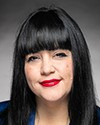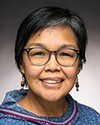Okay. Thanks for clarifying, Mr. Chair.
I'll start off with, I have some questions, as a former teacher myself. I taught high school for seven years. I was a bit unique, I guess, in my education. I became a tradesman. I was a Red Seal carpenter; I am a Red Seal carpenter. Then I went and got two degrees after that. I have seen both sides of the fence, with a trades education and also university. I have a heart for trades training—let me put it that way.
I'll dig into this article from Nunavut News. It was dated June 26, 2021.
Statistics Canada reported as of 2016 that 41 per cent of Inuit had attained their high school diploma. Among Inuit living within Inuit Nunangat, 28.2 per cent reported a post-secondary qualification compared with Inuit living outside Inuit Nunangat at 53.3 per cent.
“It is working, but not to its fullest capacity,” says Peesee Pitsiulak, Nunavut Arctic College's Nunatta Campus dean and a member of the Arctic and Northern Policy Framework's Task Force on Northern Post-Secondary Education.
I'll start off with that. It's not a great stat. One thing I always found as a bit of joy in being a teacher and a coach was seeing kids in my class succeed and go off. They'd come to me later on and say, “Mr. Zimmer, I'm a welder now,” or, “I have my degree.” I couldn't be happier for students who have achieved more success after they've been in my class.
There are still problems. I'll quote an article. The article is “The Insufficiency of High School Completion Rates to Redress Educational Inequities among Indigenous Students”, and I'll quote a paragraph in it that I think is telling.
Notably absent from these plans is consultation with First Nations communities regarding their perspectives on potential improvements and the accessibility of the system. Since we understand that on-reserve First Nations students have the lowest graduation rates, perhaps engaging with these communities on collaborative strategies through the Accountability Framework could drastically increase learners' success in the education system and reduce pervasive disparity.
It continues:
For example, the increases in the graduation rates to near parity for Indigenous learners in the northern British Columbia school district previously referenced was built upon strong relationships and collaboration with First Nations....
I had this question for the minister, but I understand that she could only be here for an hour. We can talk about this all day long. We could have meetings for 10 years and 20 years and still have more meetings and more meetings. We could throw funding at the problem, but unless we're consulting with first nations communities to ask what we need to do to fix this, then we're going nowhere. We're spinning in circles and just spending a lot more money, not getting anywhere.
The sad part of it is that the kids are the ones who lose. They're the ones who end up at a lower graduation rate and with less of an opportunity going forward.
What I want to do is ask whoever is part of the department this: What are you doing to consult with first nations about how to increase these rates—graduation rates and success rates—among indigenous students in indigenous communities?





